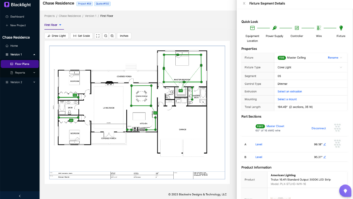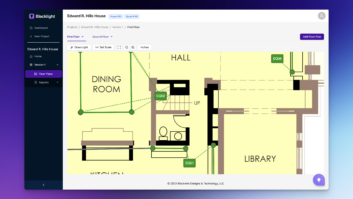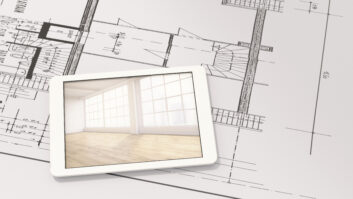In the more than a decade since the Custom Electronic Design and Installation Assocation (CEDIA) was founded, the industry has successfully convinced tens of thousands of customers to invest in the value of the “electronic lifestyle,” enabling design and installation firms to generate millions of dollars in revenue. But even though the word design is right in the middle of the CEDIA name, it remains an area that too many clients assume is included in our industry’s services for free.
It is important to recognize that design, whether for a system, room acoustics, lighting or seating, is a service that requires skilled personnel, engineering expertise and knowledge. Implementation of these skills is something for which your company has invested training and certification resources, and this investment should be a recoverable expense for your company.
No customer should be allowed to expect that you will just “do the design” for free; they don’t expect this from other professionals involved in their residence. For instance, if your client contracts with a builder/home designer, architectural designer, interior designer, landscape designer or HVAC system designer/contractor, then they expect the process to work in the following fashion:
1) They will have an initial meeting to discuss options, concepts, potential plans, ideas, etc. If they proceed forward they will sign an agreement specifying the next few steps and agreeing to a set of fees, including a non-refundable initial design or concept development fee.
2) The professional will then produce a series of preliminary designs, sketches, layout, concepts, etc., and present these to the client at a subsequent meeting.
3) If changes are required or new designs are needed then there will be a fee associated with those changes, just as there will be a fee associated with any changes made during the project’s timeframe (the euphoniously named “change order”).
No one seems to expect these other designers to do their initial or follow-up work on “spec” or for free, and yet most “residential systems” clients seem to think that we do. Unfortunately, most companies within the industry will acquiesce to the request and essentially “give away” a highly profitable revenue source.
Many designer/installers (DIs) argue that they don’t want to expose their designs too early for fear that the customer will take the information and go elsewhere. This is only an issue if they haven’t been paid for their work up to that point. If you are compensated for the effort, and the customer decides to take your work elsewhere, at least you will have your costs covered. If the documentation of your work carries your imprint and then they present it to any other ethical competitor, there should be questions asked about why someone else’s design is being presented for quote or install work. Clearly, there are those whose business ethics are not as solid, but if they are a CEDIA member, then this would be a clear ethical violation and subject to review and action.
Instead of looking at design elements of a project as a burden or something to be absorbed, the process needs to be presented in the same kind of staged sequential manner they experienced from the other trades involved. Reference or sample designs for technical systems and all the other elements of a project should be showcased during your initial meeting. Give the client the expectation that he/she will receive the same level of professionalism demonstrated in the samples you use and that this service has a cost–a cost that needs to be paid before the project moves forward.
Be sure to emphasize that customized design work is the foundation upon which successful system and installs are built. Each client’s home is unique and tailoring a set of designs specifically to their space, their lifestyle, their needs and their capabilities is the only way that they will actually get what they want. They came to you because you could provide custom electronics design and installation capabilities. The “custom” part of that phrase is why design work is essential.
Another practical aspect of generating fees and profits from design/engineering work is that the margin per billed dollar is generally higher than that on hardware. With constant price pressure on equipment margins and an overall erosion of the next profit-per-hardware dollar, other sources of revenue can be the difference between producing a reasonable operating net profit or not.
Let’s look at the client process when design is offered as part of a package of services and capabilities:
1) You have your initial meeting with the prospective client at your showroom or at their residence. In addition to presenting your company’s product offerings, you discuss needs and do a preliminary needs analysis/assessment. As part of that process you show them a set of project documentation and presentation data from previous jobs, outlining the details, the timeline for most projects, how this affects them, the needed basic steps and a preliminary schedule of what will be shown to them and when.
2) A schedule of fees and costs for various services is part of this meeting, insuring that everyone understands what costs will be incurred and when, what the deliverables are and how they will be done.
3) Either at this meeting or in the next, a “letter of intent” document is executed wherein the client agrees to certain costs, services and procedures, and acknowledges the concepts of what will be provided and for how much. This also amounts to their commitment to you that you “have a deal.”
Unfortunately, our industry has been remarkably inconsistent on the topic of treating design services as a billable charge. If you charge a design fee to one client (a big job, for example) but then throw it in for free to the next guy (a small, quick job), the word will rapidly spread. The next referral or walk in that knows customer #2 in this scenario, already expects you to do stuff for free. If, however, you approach every job, of any size, with the same basic structure and business practices, you can successfully produce real revenue for your design work. Whether its just a few hundred of dollars on a simple system or a five-figure fee on a large-scale undertaking, the consistent method will be effective.
Marketing professionals love the idea of free samples to generate sales. If you are selling. Brand development means everything to products, such as cookies, soap or cereal that people buy, use up and have to buy again. This is also precisely why you don’t want to give free samples of your skills. You are not trying to reach absolutely everyone. You want to “pre-filter” those in whom you invest time to avoid wasting both your time.
Most importantly, you need to establish an impression as a consummate professionalism in your business. You must ensure that your customers place you on the same level as their architect, builder, etc. Realistically the work you do and the systems you install will affect their daily lives more directly than almost anything else the customer is “purchasing,” and you need to gently remind them of this fact when you tell them what you do and why. Once that fact has sunk in, it will become a lot easier to convey a “you get what pay for” idea with appropriate subtlety.
Frederick J. Ampel ([email protected]) is president of Technology Visions in Overland Park, Kansas.







